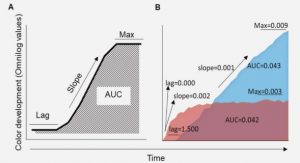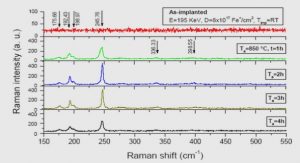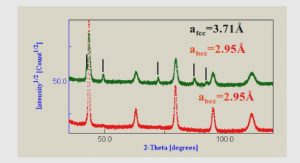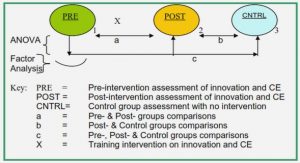Get Complete Project Material File(s) Now! »
Numerous histone post translational modifications and histone variants contribute to the epigenetic information
All histones are subjected to a wide variety of post translational modifications that include methylation, acetylation, phosphorylation, ubiquitination, and citrullination (Figure I-8) (reviewed in (Jenuwein & Allis, 2001)(Berger, 2007)(Bannister & Kouzarides, 2011)(Feng & Jacobsen, 2011)). These modifications affect various amino acids at different positions but the nucleosomal histones are mostly modified at their NH2-terminus which protrudes out of the nucleosome (Figure I-8). In addition histone H2A, histone H3 and histone H1 are encoded by small gene families, allowing the production of different isoforms usually referred to as histone variants that bear specific roles and may be subjected to differential PTMs (reviewed in (Talbert & Henikoff, 2017)(D. Jiang & Berger, 2017)). Importantly, most histone marks are found both in plants and animals, but the same histone mark can have different distribution and physiological function in different organisms. A striking example is H3K9me3 which is mostly associated with heterochromatin in organisms ranging from the fission yeast to humans (Becker, Nicetto, & Zaret, 2016), whereas it is typically found in euchromatin in Arabidopsis (Roudier et al., 2011).
Histone modifications and histone variants control several processes linked to genome function, such as DNA replication, DNA repair, DNA recombination and transcriptional activation/inactivation (Vergara & Gutierrez, 2017). But most studies have focused on their function in gene expression, which relies on two main mechanisms (Reviews: (Berger et al., 2007)(Bannister & Kouzarides, 2011)(Engelhorn, Blanvillain, & Carles, 2014)). First some HPTMs, like histone acetylation, neutralize the positive charge of histones, and weaken the interaction between histones and the negatively charged DNA molecule therefore leading to an increased DNA accessibility to the transcriptional machinery. Recent data based on a multiscale computational study have shown that histone lysine acetylation also unfolds chromatin by decreasing tail availability for inter-nucleosome interactions, which are important for the chromatin fiber compaction (Collepardo-Guevara et al., 2015). In addition HPTMs are recognized by a diverse set of effector proteins, also called histone readers, which participate to the control of gene expression, as for example chromatin remodeling proteins or transcriptional regulators. Hence a large array of protein domains has been characterized, which recognize and bind to specific histone modifications. Some of the HPTM readers are directly responsible for a specific functional outcome such as the DNA methyltransferase CMT3 which recognizes H3K9me2 (A. Lindroth et al., 2004)(Du et al., 2012) and is responsible for CHG methylation (A. M. Lindroth et al., 2001)(see part 1.3.2 DNA methylation). Alternatively, HPTM readers can act through their interaction with effector proteins. For example, the Arabidopsis Morf Related Gene (MRG) group proteins, MRG1 and MRG2 recognize the H3K4me3/H3K36me3 marks on the FLOWERING LOCUS T (FT) promoter and this interaction favors the activation of FT gene transcription through a physical interaction between MRG1 / MRG2 and the transcription factor CONSTANS (Bu et al., 2014). Because they rely on a number of different protein partners, such mechanisms, can be precisely controlled. Finally recent data suggest that HPTMs play a role in the 3D organization of genomic DNA, contributing to the formation of specific nuclear territories, characterized by precise expression output (Liu et al., 2016)(Veluchamy et al., 2016)(Rodriguez-Granados et al., 2016).
The genome wide distribution of HPTMS shape the epigenetic landscape
The recent development of genome wide analysis of epigenetic mark distribution has shown that histone PTMs together with DNA methylation (see below; 5 methylcytosine, 5mC) can form specific
Figure I-8. Schematic representation of histone modifications (Rodriguez-Paredes et al., 2011). H2A, H2B, H3 and H4 represent four-nucleosome histones. Me, methylation;Ac, acetylation, Ci, citrullination ;Ub,ubiquitination; P, phosphorylation. combinations that define genome territories with either active or repressive chromatin states in multiple organisms from plants including rice (X. Li et al., 2008), Arabidopsis (Roudier et al., 2011)(C. Luo et al., 2013)(Sequeira-Mendes et al., 2014)(C. Wang et al., 2015), and barley (K. Baker et al., 2015), to metazoa (as reviewed in (M. Baker, 2011)). These studies allowed the identification of a finite number of chromatin states along chromosomes, characterized by distinct sets of epigenetic marks. Interestingly, genomic elements are often distinguished by specific chromatin states. For example in Arabidopsis, silent heterochromatin is associated with H3.1, H3K9me2, H3K27me1 and 5mC, whereas many actively transcribed gene show around the transcription starting site a combination of H2Bub, H3K36me3, H3K4me3. Alternatively repressed genes present in euchromatic regions are associated with H3K27me3 within a nucleosome context enriched in H3.1 (Roudier et al., 2011)(Sequeira-Mendes et al., 2014). Figure I-9 gives an overview of the nine Arabidopsis chromatin states as well as their associated genomic features, as defined in (Sequeira-Mendes et al., 2014).
Interestingly some genes are associated with both active and repressive marks, as illustrated by the state 2 defined by (Sequeira-Mendes et al., 2014), where H3K4me2 and H3K27me2 coexist. Such bivalent chromatin states have been described at genes coding for important developmental regulators such as AGAMOUS (Saleh et al., 2007) or floral integrators (S. Qian et al., 2018) and could be necessary for fine tuning gene expression.
HPTMs dynamic is controlled by specific enzymes
Active and repressive histone marks are established and removed by specific enzymes referred to respectively as HPTM writers and erasers. The level of each HPTM is therefore determined in a dynamic fashion, by the relative abundance / activity of its specific writer(s) and eraser(s). Although HPTMs are reversible marks, their stability is variable. For example histone acetylation is a very dynamic epigenetic mark. The estimation of H3 and H4 acetylation turnover rates in human cells revealed very short half-lives (Zheng et al., 2013), with 12 histone sites displaying half-life below one hour (Weinert et al., 2018). As a consequence, modification of histone acetylation status could be essential when rapid changes in gene expression are required, for example in response to environmental stimuli (Barth & Imhof, 2010). On the contrary, H3K27me3 was initially considered as a very stable epigenetic mark that was conserved through cell division perpetuating the stable repressive state of the chromatin at specific loci. Consequently H3K27me3 is considered has a major determinant of cell identity, although it is now clearly established that this mark can be actively removed by the Jumonji-type of histone demethylases (reviewed in (Chunyan Liu et al., 2010)(X. Chen, Hu, & Zhou, 2011)(Xiao, Lee, & Wagner, 2016).
Many genes coding for HPTM writers and erasers have been identified and functionally characterized in the model plant Arabidopsis. Most studies have focused on histone methylation and acetylation, so that other HPTMS such as histone phosphorylation or sumoylation have been comparatively overlooked. Over the past decade, functional analyses of writers and erasers have also been conducted in a few other model and crop species, like tomato (How Kit et al., 2010)(Boureau et al., 2016) rice (S. Li et al., 2014)(M. Zheng et al., 2015)(K. Liu, Yu, Dong, & Shen, 2017)(P. Jiang, Wang, Jiang, et al., 2018; P. Jiang, Wang, Zheng, et al., 2018), Brassica napus (L. Jiang et al., 2018), poplar (Fan et al., 2018), wheat (J. Liu et al., 2018) or maize (Rossi et al., 2007)(Forestan et al., 2018). These studies are mainly based on the characterization of genes presenting homologies with the genes originally identified in Arabidopsis. As shown in Figure I-9, each histone mark is set up by a specific set of enzymes, which are frequently specialized in the addition of a precise number of modifications. For example whereas ARABIDOPSIS TRITHORAX-RELATED PROTEIN 5 (ATRX5) and ATRX6 proteins of the trithorax group are responsible for the addition of one methyl group at histone 3 lysine 27 (H3K27me1) (Jacob et al., 2009), Enhancer of Zeste proteins from the Polycomb group family are part of the Polycomb repressive Complex 2 (PRC2) and are in charge of the addition of 2 and 3 methyl groups at the same residue (H3K27me3) (reviewed in (Chunyan Liu et al., 2010) (Figure I-9).
DNA methylation distribution in plants
The development of genome wide strategies to analyze DNA methylation such as Methyl DNA Immunoprecipitation (MeDIP)- seq or Whole Genome Bisulfite Sequencing (WGBS, (Yong et al., 2016)(K. Do Kim et al., 2014)(Beck & Rakyan, 2008)) has allowed determining the distribution of DNA methylation in several eucaryotes. Among these methods WGBS is considered as the golden standard method as it allows unraveling the position at one base resolution and therefore provides the most accurate view of the distribution of 5mC in eukaryotes genomes (Yong et al., 2016). As far as plants are concerned, the description of the genome wide distribution of methylated cytosines was initially reported in Arabidopsis (Cokus et al., 2008)(Zilberman et al., 2007)(Zhang et al., 2006) but an increasing number of plant methylomes has now been investigated (Niederhuth et al., 2016) including several crops such as rice (Xin Li et al., 2012b), maize (Eichten et al., 2013), or tomato (Zhong et al., 2013). Results indicate that DNA methylation levels varies significantly between species irrespective to the sequence contexts although in most cases similar rules seem to apply (Niederhuth et al, 2016)(Figure I-11). Hence, CG methylation is the highest in all species tested and can vary up to three fold between species, the lowest mCG content being found in Arabidopsis (30%) and the highest in Beta vulgaris (90%). In the plant species analyzed, mCHG and mCHH contents were found at lower levels than CG methylation and ranged between 9.3 and 81.2%, and between 1.4 and 18.8 %, respectively. The range of methylation variations in these two contexts is therefore much higher than the one observed for the CG context. When considering the distribution of mC within genomes, various studies have shown that the centromeric and pericentromeric regions of chromosomes, that are enriched in transposable elements (TEs) and tandem repeats are the most heavily methylated (Cokus et al., 2008)(Lister et al., 2008)(Seymour et al., 2014) although some variations between plant species were observed (Niederhuth et al., 2016). High methylation levels at transposons (TE) is consistent with 5mC being of primary importance in the control of their activity and is thought to inhibit their transcription (Cui et al., 2014).
The distribution of DNA methylation differs in genes as compared to TEs and present common features between plant species. First, early work on Arabidopsis has shown that only 5% of the genes were methylated within their promoter region (Cokus et al., 2008). However such studies were performed using mixture of tissues making difficult to determine the precise number of genes with methylated promoters and relation with gene expression. Since that time, other works have analyzed organ specific DNA methylation patterns in relation with gene expression profiles demonstrating an inverse correlation between DNA methylation in promoters and gene expression. For example analysis of DNA methylation during soybean seed development and maturation has allowed identifying 40, 66 and 2136 genes with changes in DNA methylation levels in the CG, CHG and CHH contexts, respectively. Most of the genes with differentially methylated regions in the CHH context showed a negative correlation between methylation and expression levels (An et al., 2017). Similarly in tomato fruits, low methylation levels at promoters of a subset of ripening induced genes has been correlated with gene expression (Lang et al., 2017)(R. Liu et al., 2015)(Zhong et al., 2013). Thus, promoter methylation is likely associated with the repression of gene expression although recent evidence suggests that the converse is also possible (Lang et al., 2017, Cheng et al., 2018, Huang et al., 2019).
Noteworthy the body of genes can also be methylated, only in the CG context though. This is consistent with CHG and CHH methylation being antagonist to transcription elongation whereas CG methylation is not (Coleman-Derr et al., 2012)(Takuno et al., 2012)(Feng et al., 2010)(Zemach et al., 2010)(Zilberman et al., 2007)). For now, the function of gene Body methylation (GbM) is not understood, although more than 30% of genes are concerned in Arabidopsis that correspond to gene expressed in a rather constitutive and moderate way (Zhang et al., 2006)(Zilberman et al., 2007). However, some plants exist where CMT3 and GbM methylation have been lost, suggesting they are either not required for plant viability, or can be compensated by other mechanisms (Bewick et al., 2017). However, such situations are rare which would suggest that GbM has some important functionality still to be discovered. Noteworthy GbM seems to depend on latitude in Arabidopsis which may suggest an adaptive function to the environment (Dubin et al., 2015).
These results indicate that the function of DNA methylation in plants is complex and depends both on the sequence context and localization, an idea further sustained by the analysis of DNMT mutants (Stroud et al., 2013).
Epigenetic regulations in fleshy fruits
Genetic control of ripening has been demonstrated for climacteric fruits, mainly in the tomato model, and several mutations affecting essential regulators of ripening have been described in this plant (Gapper et al., 2014). Indeed the recent discovery that epigenetic regulators are major players in the control of fruit development, ripening and senescence has deeply changed the proposed models describing the regulation of fruit development, and raises the question of the general function of such mechanisms in all types of fruits. So far, most studies have been performed on tomato (Bucher et al., 2018; Gallusci et al., 2016), but evidence are now accumulating that such regulators may be important in other types of fruits (Huang et al.,2019; Cheng et al.,2018).
Evidence that HPTMs are essential to fleshy fruit development
As mentioned above, HPTMs are critical to many plant development processes, and recent evidence indicate that these epigenetic marks are essential during fruit development and ripening (reviewed in (Bucher et al., 2018)(Gallusci et al., 2016)).
Genes encoding histone deacetylases (HDACs), histone acetyltransferase (HATs), histone methyl transferases (HMT) or histone demethylases (HDMTs) have been identified in several fleshy fruit species among which apple (Janssen et al., 2008), banana (Fu et al., 2018), kiwifruit (Peng et al, 2017), sweet orange (Xu et al., 2015), strawberry (Gu et al., 2016), and tomato (Cigliano et al., 2013)(Zhao et al., 2015). Studies have shown that some of the genes encoding histones modifiers are preferentially expressed in fruits, with stage specific expression patterns that depend both on fruit species and HPTM modifiers. In grapevine, genome wide analysis have revealed 7 and 13 genes coding for putative HATs and HDAC respectively, 33 genes encoding proteins containing a SET Domain, and genes encoding protagonists of PRC2s, that for some of them present expression patterns consistent with a possible involvement in grape berry development and ripening (Aquea et al., 2010, 2011)(Almada et al., 2011). Taken together, these results suggested that the corresponding proteins were recruited for the control of fruit development, ripening and abscission in fleshy fruit species. However evidence of their role in fruit development was provided essentially by loss or gain of function studies in tomato (recent reviews (Bucher et al, 2018; Giovannonni et al, 2017; Gallusci et al, 2016)).
Early studies have focused on the tomato high pigment mutants (hp1, hp2) which present increased carotenoid content. The corresponding tomato genes encode 2 subunits of an ubiquitin ligase complex, namely DDB1 and DET1 respectively (Tang et al., 2016b). In human, this complex is known to target histone proteins for ubiquitination in response to DNA damages (Hu et al., 2004)(Wang et al., 2006). In tomato, by impeding light signal transduction through preventing the ubiquitination of H2B histones (Benvenuto et al, 2002)(Lieberman et al., 2004), these mutations may affect the transcriptional repression of genes involved in the production of carotenoids and other compound, therefore generating the enhanced pigmented fruit phenotype. In addition, silencing studies were conducted in tomato on different components of the histone modifier complex PRC2 (Polycomb repressive complex 2). Silencing studies were conducted to repress genes encoding the Enhancer of Zeste EZ1 and EZ2 proteins (How-Kit et al. 2010)(Boureau et al., 2016) and the FIE protein (Fertilisation Independent Endosperm Development (Liu et al., 2012b), and revealed essentially roles during flower formation and early fruit development (reviewed in Bucher et al, 2018; Gallusci et al, 2016). In a more recent work, impairment of MSI1 (Multi Suppressor of Ira 1) a putative component of the tomato PRC2s, was shown to affect fruit ripening (Liu et al., 2016b). However MSI1 is also a member of the FAS complex involved in chromatin assembly. As none of the other PRC2 components do affect fruit ripening when repressed, it is more likely that the effect on ripening is due to the FAS complex than to PRC2 activity. Indeed FAS activity might be of primary importance in tomato fruits due the high endoreduplication level achieved (Teyssier et al., 2008). Finally, other studies have shown that the control of histone acetylation is also important to fine tune the ripening induction. For example plants with reduced activity of various HDACs, present delayed carotenoid accumulation and ripening ((Guo et al., 2017a)(2017b)) or an opposite effect on both processes (Guo et al., 2018).
Evidence of the role of HPTMs in fruits was further provided in the frame of the fruit ENCODE project that aimed at analyzing the evolution of fleshy fruit ripening control in angiosperm. Combined genetic and epigenetic approaches was implemented on 13 different fruit species including (i) climacteric fruit species (tomato, apple, pear, banana, melon, papaya, an peach), (ii) non-climacteric fruit species (grape, strawberry, cucumber and water-melon) and (iii) dry fruit species (Arabidopsis and Rice) (Lü et al., 2018). The project allowed generating multidimensional dataset based on transcriptomic, DNA methylation and histone PTMs with a focus on H3K27me3 and H3K4me3 profiles to decipher genetic and epigenetic events controlling fruit ripening (Lü et al., 2018). In this context, researchers focused on key molecular players involved in ethylene-dependent ripening circuits in climacteric fruit and their orthologues in non-climacteric and dry fruits. Although global and locus specific DNA methylation changes were observed in all fruit species during ripening induction, DNA demethylation was suggested to be only required for tomato ripening. However these conclusions were based on correlative studies without any functional foundation, and are not consistent with the recent demonstration that in addition to tomato fruit ripening (see below, (R. Liu et al., 2015)(Lang et al., 2017)), strawberry and sweet orange fruit ripening is also under DNA methylation control although different mechanisms are operating (Cheng et al., 2018) (Huang et al., 2019). In contrast, Lü et al (2017) suggested that, instead of DNA methylation, the repressive mark H3K27me3 may play a conserved – and maybe central – role in regulating fruit ripening, although its precise function and importance may vary between fruit species. Indeed, for a few ripening related genes, a correlation was found between their induction during ripening and the removal of H3K27m3 in several fruit species, therefore suggesting an ancestral inherited role for this mark in angiosperm fruit ripening (Lü et al., 2017). Interestingly, a recent study indicates that H3K27me3 may be involved in the control of Methoxypyrazines (MPs) in grape fruits, a compound known to contribute to the herbaceous characters in wine (Battilana et al., 2017). MPs biosynthesis depends on the expression of the VvOMT3 gene which encodes a protein controlling the final and key step of this biosynthetic pathway in grape. However, MP accumulation is variety dependent. For example berries from Cabernet Sauvignon accumulate MPs, but those of Pinot Meunier dwarf do not. Recent study have shown the mark H3K27me3 is abundant at the VvOMT3 locus in Pinot Meunier dwarf but not in Cabernet Sauvignon berries (Battilana et al., 2017), suggesting that H3K27me3 inhibits VvOMT3 gene expression resulting in the inhibition of MP biosynthesis. Although these results are consistent with an important role of H3K27me3 in fruit ripening control this mark does not seem to be critical for ripening in all fleshy fruit species (How-Kit et al. 2010)(Boureau et al., 2016)(Liu et al., 2012b). The characterization of PRC2 mutants or of mutants affected in the removal of the H3K27me3 mark will now be necessary to better assess the importance of this epigenetic mark in modulating the epigenetic landscape and its consequences on gene expression and fruit phenotypes.
Table of contents :
General Introduction
1. Grape plant: general introduction
1.1.1 Grape plant: economic importance
1.1.2 Grape: a model for woody perennials fruit crops
2. Fleshy fruit development: specificities of grape berries
Fleshy fruit development
Specificity of grape berry development
3. Relevance of epigenetic mechanisms in plant
Histone post-translational modifications
a. Numerous histone post translational modifications and histone variants contribute to the epigenetic information
b. The genome wide distribution of HPTMS shape the epigenetic landscape
c. HPTMs dynamic is controlled by specific enzymes
d. A diversity of mechanisms are involved in the targeting of histone writers / erasers
e. Regulation of HPTM remodeling
DNA methylation
a. Mechanisms of DNA methylation in plants
b. DNA demethylation
c. DNA methylation distribution in plants
4. Epigenetic regulations in fleshy fruits
Evidence that HPTMs are essential to fleshy fruit development
Genome wide DNA methylation reprogramming is critical to fruit ripening
a. DNA methylation role in fruit development and shape
b. Evidence that DNA methylation is critical to fruit ripening
Interaction between hormones and epigenetic regulations in fleshy fruit development and 1.4.3ripening
5. Objectives of the PhD project
Analysis of the role of DNA methylation in grape berry ripening:
The use of in vitro grape cell culture as a model system to evaluate the potential role of 1.5.2DA methylation on anthocyanin synthesis in grape cells
CHAPTER II Abstract
1. Introduction
2. Material and Methods
Identification of grape DNA methyltransferases and Demethylases
Plant Material
In vitro Culture of grape berries
Nucleic Acid extraction
Gene expression analysis by Real-time-PCR
RNA-Seq analysis
Whole genome bisulfite sequencing analysis
3. Results
DNA Methyltransferase inhibitors delay grape berry ripening
Characterization of Grape Berry development and Ripening
a. Berry Development and Ripening
b. Tissue Specific Metabolite changes during berry development and Ripening
Organic Acid accumulation
Soluble sugar accumulation
Anthocyanin composition and concentration
Transcriptomic analysis of grape berry during development and ripening
a. Summary of RNA seq data
b. Differential Gene Expression between pulp and skin of grape berry
c. Differential Gene Expression between developmental stages
d. Validation of RNA seq data
Identification of grape DNA methyltransferases and demethylases.
MTase and DML genes present similar expression patterns during grape berry development with RNA seq and RT QPCR
e. Transcriptomic variations in skin and pulp during berry ripening
f. Go Analysis of DEGs
Functionnal Annotation of Group A DEGs
Functionnal Annotation of Group B DEGs
g. Photosynthesis related genes are more repressed in pulp and skin during ripening
h. Genes encoding enzymes involved in cell wall metabolisms present complex expression patterns during ripening.
i. Genes involved in soluble sugar synthesis and transport are highly expressed in the pulp
j. Organic acid related genes reflect the differential accumulation of OA in berry tissues
k. Hormones
l. Genes involved in Secondary metabolite accumulation are specifically induced in the skin during berry ripening
Analysis of changes in the DNA methylation landscape in fruits tissues during ripening
a. Summary of DNA Methylation analysis
b. Features of grape berry DNA methylomes
c. DNA Methylation changes during berry ripening
d. Analysis of differentially methylated regions
e. Methylation and gene expression.
4. Discussion
In vitro treatment with DNA methyltransferase inhibitors affected grape berry ripening2.4.1
Pulp and skin present specific metabolite, transcriptomic and methylation characteristics.2.4.2
There is no clear link between DNA methylation variations at promoters and changes in 2.4.3gene expression.
5. Conclusion
6. Chapter II Supplementary Material
7. Chapter II References






